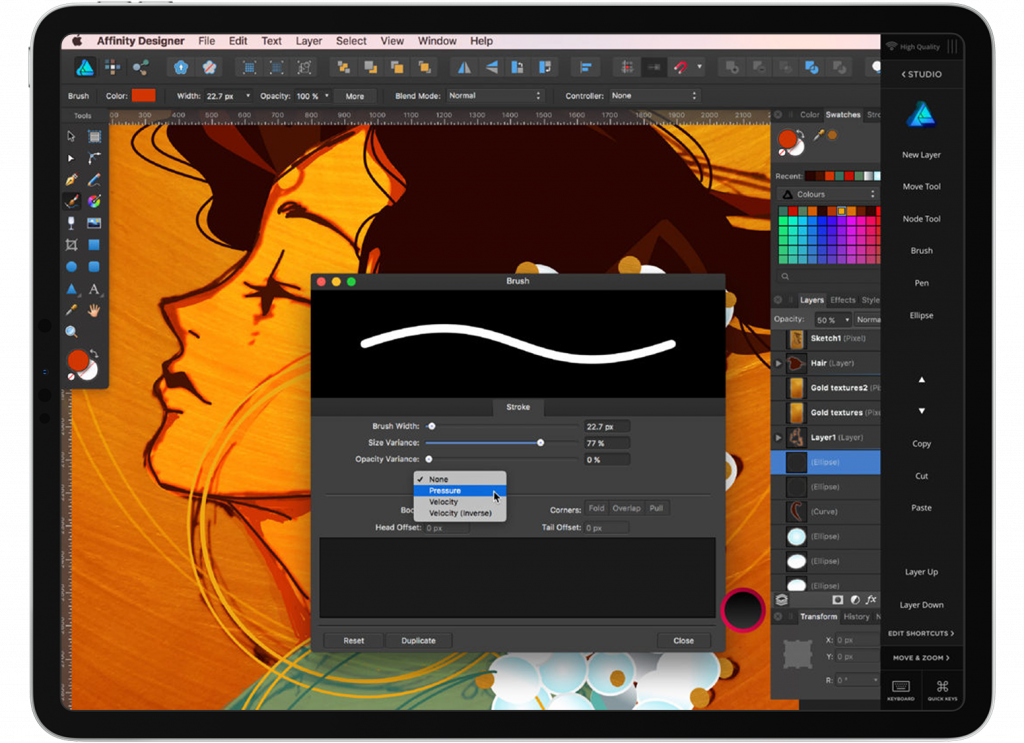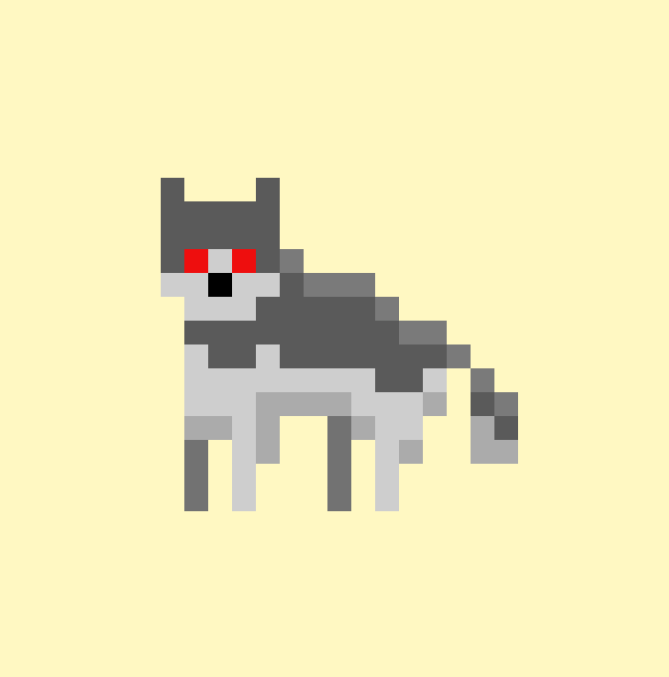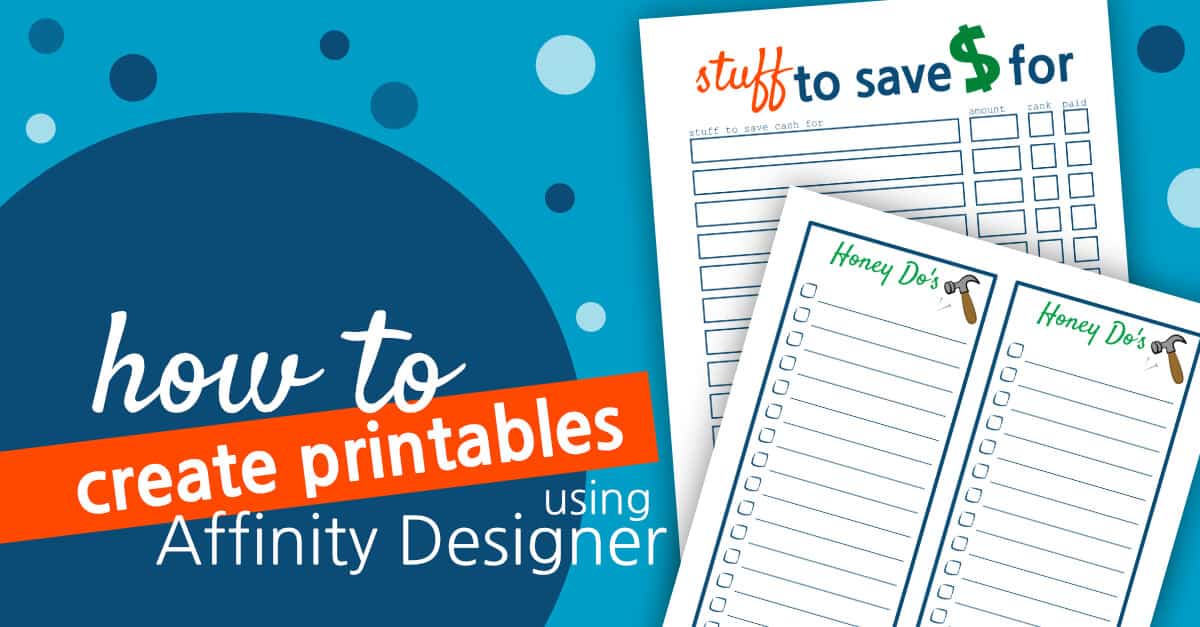how to make cool things with affinity designer
- Using Affinity Designer For Pixel Art
- Using Affinity Designer
- Using Affinity Designer
Affinity Designer for desktop tutorials Watch tutorial and quick tip videos for the fastest, smoothest and most precise creative software. Magnifying glass icon to highlight a search field. All Videos Basic Operations Advanced Operations Design Aids Vector Tools. Hey everyone, welcome! In this tutorial, you can learn about how to make a logo in Affinity Designer software. I hope you will enjoy this video. In the 'Pixel Tools' section, you can learn how to use the tools that make Affinity Designer for iPad truly multi-discipline. Check out Charlotte explaining how to use the Paint Brush Tool. Charlotte shows how to use the Paint Brush Tool in Pixel Persona. Other videos in this section include. Hey everyone, this time i've made10 Logos Design In 4 Minutes Using Affinity Designer don't forget to like+comment+share+sub:).
Affinity Designer is a vector or raster app. It's a competitor to Adobe's Illustrator and allows you to design various elements for print or digital publication.
It's part of the Affinity package of design tools made by Serif. Use it to do anything from making a business card to mock up an app. Affinity Designer is made for Mac iOS, Windows, and the iPad.
Here, we've collected some of the best for everyone from beginners to more seasoned pros, a mix of video and written tutorials. It's a great place to start for upskilling with your first steps in Affinity Designer!
Affinity Designer UI Overview
Using Affinity Designer For Pixel Art
If you are new to Affinity Designer or just want an overview of the tool and what it looks like before making a purchase, this UI overview is the place to start. The video lasts less than 5 minutes and walks through the user interface, highlighting a few key elements of the software.
Affinity Designer: The File Menu
Another beginner tutorial, this video takes you through the file menu and looks at each option and how to use it. Rory Townsend, who made the video, also has similar video tutorials with each of the other menu options to help you really get a good hold on all the things you can do with Affinity Designer and where each individual tool or option is located in the menu.
Affinity Designer: 10 Basics
This is the ultimate getting started video guide for Affinity Designer, with all the basics in one video. You'll learn how to get started with a new document, use premade and custom shapes, work with colors, see how layers work, combine shapes, work with vectors and the vector brush and pen tools, add text to a file, and save and export. It's all in an easy to follow video and you can get all this information in less than 20 minutes. Plus, the video host Jesse Showalter, has plenty of energy so this tutorial anything but boring.
Affinity Designer Basic Logo Design
Affinity Designer is a tool that allows you to work with vector or raster images. That means you can create logos that can be scaled for any use with the software. In this tutorial, you walk through all the steps to create a simple vector logo using tools in Affinity Designer.
How to Create a Flat Vector Illustration in Affinity Designer
Because of vector functionality, Affinity Designer can also be used to create illustrations. This tutorial takes you through the steps to create a flat illustration, such as the example above, that you can apply to full-scale illustrations, logo, or icon design. The tutorial includes step-by-step instructions and plenty of screenshots that you can use to follow along on your own.
Using the Layers Panel
Using layers and groups is a powerful function that can help keep files organized and a lot easier to manage. Using them in Affinity Designer is fairly easy. Learn everything you need to know about layers and groups in this short video from the makers of the software.
How to Create an Icon in Affinity Designer
Icon design is something almost everyone comes across at some point. Affinity Designer is the perfect tool for creating all manner of icons. This tutorial takes you through the process step-by-step, and even includes some bonus information such as how to choose the right size when designing an icon and how to use various tools. Every step includes screenshots to make understanding easy.
Symbols in Affinity Designer
Using symbols as linked objects allow you to edit one element and it impacts everything in the design. (This is an awesome feature.) This tutorial shows you how to use symbols as intelligent linked objects for great global editing capability. (Learn this pro trick in less than 5 minutes!)

Using Text Effects
Text manipulations can be somewhat controversial. Purists say you should never mess with a typeface, but sometimes you have to use certain effects to make it work for your project. This Affinity Design tutorial shows you how to do just that. You'll get an introduction to text effect manipulations in this easy to follow video.
How to Create Patterns in Affinity Designer
Patterns have a lot of practical use from website backgrounds to the main artwork for a poster or brochure. From subtle repeating shapes to something a little bolder, there are a few different ways to create a pattern in Affinity Designer. This tutorial explores three options. Note there are a lot of steps here, but the instructions and screenshots are easy to follow. Don't let the depth of the lesson intimidate you.
Affinity Designer for iPad
The recording of a live session provides an overview of everything you need to use Affinity Designer effectively on an iPad. You'll get an overview of tools and the software as well as creating specific things (a playing card, book cover, and poster) using tablet-based tools. The tutorial lasts over an hour and is comprehensive.
Pen Tool Masking in Affinity Designer
Use the Pen tool in Affinity Designer to create a dynamic mask of a selection of an image and apply modifications. This is a cool feature that can take some time to learn and this tutorial gives you a jumpstart.
Shapes Around a Curved Line in Affinity Designer
In less than 5 minutes, you can apply shapes to a curved line. You'll learn how to create a brush from a shape and use that to apply to any shape or size of curved line. The tutorial explains this function clearly and shows how to apply this highly functional feature.
Advanced Color Features in Affinity Designer
You can create, save, and store colors and fills in Affinity Designer. This is great for palettes that will be reused so you don't have to manually renter color mixes every time. Using these advanced color features is easy to learn if you know the tricks offered in this video tutorial.
Everything You Need to Know About Affinity Designer Brushes
Brushes can help speed workflows and allow you to create custom stroke styles. This tutorial shows you how to use the tool including basics of the brushes panel, how to set up vector or raster brushes, how to create your own brushes, how to install brush packs, and how to use brushes from Photoshop or Illustrator.
Affinity Designer Point Transform Tool
Use the point transform tool to change the look of a geometric shape in Affinity Designer. This tool lets you change shapes and alters the look of objects.
Advanced Axonometric Grid Setup
An axonometric grid shows a three-dimensional object at a skewed angle so you can see multiple sides in the illustration. Affinity Designer allows you to set up an axonometric grid for projects. This tutorial takes you through creating the custom setup.
Affinity Designer Templates
We're covering the basics of Affinity Designer, helpful tutorials, comparisons with other apps, and the best templates and assets to use.
As with any vector art program, you need to be comfortable with creating and manipulating Bézier curves. In Affinity Designer, the pen and node tools are the way to do that.
Understanding Bezier Curves
Bézier curves are used in vector art programs like Affinity Designer and Adobe Illustrator to model smooth curves.
The basic idea is that you can describe any curve using four points in space:
- the starting point
- the end point
- the control point for the starting point
- the control poing for the ending point
For a straight line, you only need the start and end points, like this:
There are no control points here, since we don't need any.
Let's look at an actual curve.
You change the shape of the curve by moving the control points. The curve bends toward the control point. The farther away the point is, the more the curve bends. For example, if we move the control point attached to the start point, we can get something like this:
Here are the control points in action:
How exactly does the software draw the curve? Wikipedia has a great animation:
There's a ton of math involved, but you don't need to know the equations to create the curves you want.
Types of Nodes
In Affinity Designer, there are three kinds of nodes:
- sharp nodes
- smooth nodes
- smart nodes

Sharp Nodes
Sharp nodes are either the end of a line or have a sharp angle. The nodes themselves are shown as squares.
The node on the bottom is a sharp node, even though it has two control points that create two curves. Since those curves don't join in a smooth swoop, but rather at an angle, the node is a sharp node.
Essentially, any time the two control points aren't joined by a straight line, you have a sharp node.
Smooth Nodes
Here's an example of a sharp node (on top) and a smooth node (on bottom).
Using Affinity Designer
As you can see, the control points of a smooth node are joined by a single straight line. Smooth nodes are represented by circles.
Smart Nodes
Smart nodes are simply smooth nodes where Affinity Designer controls how they look instead of you. They're represented by a circle with a dot in them.
In the animation below, a user creates several points and Affinity Designer draws curves between them using smart nodes.
We'll look more at smart nodes later.
Pen Tool
Use the pen tool to create curves and to transform sharp nodes into smooth nodes.
To start using the pen tool, either select the icon from the toolbar or press P.
(I strongly recommend learning the keystrokes for any graphic design program you use regularly: it can make a huge difference in your productivity.)
Move the cursor to your document, and you'll see the pen icon with a little "x" below it. That "x" tells you that you're about to create a new curve.
Creating a Curve
To create a curve, simply select the pen tool and start clicking around your document. You'll see something like this:
While there's nothing curvy about this shape, it's still known as a "curve" in the vector art world.
The node with the red square is where the next line will be drawn from. As you click around, the red square follows you.
Closing a Curve
To close a curve, click on the first node you created. When you hover over that node, a little circle will appear beneath the pen. That circle tells you that you're about to close the curve.
Using Affinity Designer
Drawing a Smooth Curve
Fortunately, you can create a smooth curve with your pen tool. When you're drawing your curve, click and drag on your nodes instead of simply clicking (which we've been doing up until now.)
You can also create a curve with all sharp nodes, and change those to smooth nodes with the pen tool.
Converting from Sharp Nodes to Smooth
When you hover over a node that's part of a closed curve, you'll see a little slash appear beneath the pen icon.
Converting from Smooth Nodes to Sharp
If you want to change a node from being smooth to sharp, i.e., removing its control points, you can option-click ⌥-click on a node.
Pen Tool Modes
The pen tool has four different modes:
- Pen mode
- Smart Mode
- Polygon Mode
- Line Mode
Pen Mode
So far, we've been using the Pen Mode, which means we can create both sharp and smooth points.
Smart Mode
The smart mode button is next to pen mode:
In Smart Mode, Affinity Designer decides how smooth your curves should be.
Smart nodes are circles with little dots in them. You saw these earlier in the article.
Polygon Mode
Next to smart mode is polygon mode.
In polygon mode, you can only create sharp nodes. No smooth curves in polygon mode.
When you create a curve in pen mode, clicking and dragging will create a smooth node. but in polygon mode, clicking and dragging simply moves a sharp node around.
Line Mode
In line mode, you can't create a closed curve; only lines.
You can create lines by both clicking and dragging, or by clicking twice (once for each end point).
Here's how you use it:
Notice that it's impossible to create a closed curve in line mode. After you create the end point, the pen becomes ready to draw a new line.
Node Tool
Once you've created your curve with the pen tool, it's time to fine-tune it with the node tool. You'll find the node tool icon on the toolbar, right underneath the Move tool.
You can also just press A.
Selecting Nodes
There are several ways to select nodes on a curve.
Selecting a Single Node
Hover over a node. You'll see the cursor change from a white arrow to a black arrow. Then click, and you've selected that node.
Selecting Multiple Nodes
Often, you'll want to manipulate more than one node at a time.
Selecting One at a Time
To add nodes one at a time, hold down the shift key when you click (⇧ - click).
Selecting Several at Once
To select a number of nodes at once, draw a rectangle around them.
Deselecting Nodes
To deselect nodes, hold down the control key (⌃) and draw a rectangle around the nodes you want to deselect.
Moving Nodes
Once your nodes are selected, you can move them with the mouse or the arrow keys.
You can also shift-click (⇧-click) to select multiple nodes at once.
Adding a Node
To add a node to an existing curve, just click on that line with the node tool.
Curving a Straight Line
Affinity Designer can a great feature that lets you easily create a curved line from a straight one. It doesn't give you a ton of control, but I've found it to be quite handy.
Place the node tool over a straight part of a curve. You'll be a little squiggle underneath the tool icon. Click and hold, and create a curve.

Adjusting Control Points
To adjust control points, click on a node and move the control points that appear.
For smooth points, if you change the angle, this will move both points. However, if you just make the line shorter or longer, the other point won't be affected.
Here's what I mean:
But what if you want to move only one of the control points, not both at the same time? In that case, hold down the option key (⌥) when you select a control point.
You can also constrain your control points by holding down the shift key (⇧) when you move them.
Converting a Smooth Node to a Sharp Node
If you've decided that smooth curve just isn't working, you can turn a smooth node into a sharp one without any control points. Simply option-click (⌥ - click) the smooth node.
Deleting a Node
To delete a node, simply select it and press delete.
Congratulations! You now have all you need to know about the mechanics of the pen and node tools in Affinity Designer. Go forth and make great art.
how to make cool things with affinity designer
Source: https://dallasfox.vgcpro.co/using-affinity-designer/